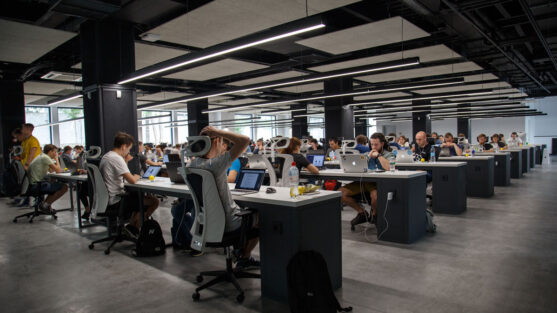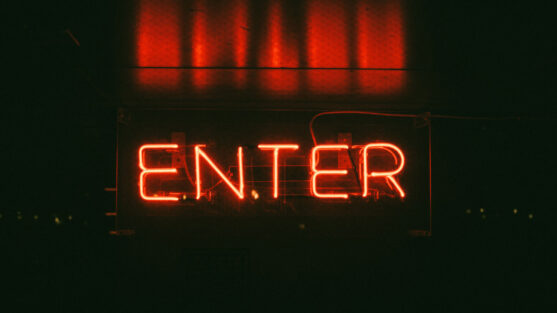
Philips has installed a system of LED lights in an office in Prague that are designed to support workers’ circadian rhythms throughout the day.
The lights, installed in the refurbished Czech Republic headquarters of energy company Innogy, could provide the same energy hit as drinking a cup of coffee, claim the designers.
“We’ve taken our knowledge of how light physiologically benefits people from successful projects in hospitals and schools and applied it to the offices space,” said Jiří Tourek, country manager at Philips Lighting.
“We know that exposure to a certain comfortable bright light setting for one-hour can provide a mild energy stimulus similar to a cup of coffee and supports wakefulness.”
Along with light intensity, which is measured in lux, energy levels can also be affected by the colour temperature, which is measured in kelvins.
According to Philips, exposing the human body to light settings of 5,000 kelvins at 780 lux for between one and four hours has been shown to increase alertness.
Based on this research, brightness and colour warmth levels have been programmed to change at set points throughout the day to increase office workers’ energy at key times.
“At the beginning of the day the office lights mimic natural daylight, providing a useful energy boost,” said Tomáš Michna, senior manager for facilities and services at Innogy.
“The light levels decrease until after lunch when we give another boost to help staff over the post-lunch energy dip.”
Workers can override the light settings depending on their needs, and the system can also be set to perform a specific task by using wall-mounted touchpad controls. These can also be used to raise or lower the window blinds.
The new lights are part of a complete renovation of the company’s 10,000-square-metre headquarters in the Limuzská district of Prague.
A new open-plan office design and the adaptable lights were part of an overall plan to “enhance the comfort, wellbeing and productivity” of the 550 employees who work across the three buildings.
The office redesign replaced fluorescent tube lighting with 2,000 LED lights, blinds and control systems, as well as adding a new restaurant serving healthy food and “creativity spaces” for workers.
Also installed were 150 sensors that can detect human presence and automatically turn the lights off should a room become empty.
Combined with the use of energy-efficient LEDs, the designers estimate this new system will use 50 percent less electricity for lighting than the previous fluorescent lights.
Other Related Posts
The Advantages of LED Hospital Lighting
For as long as we can remember, hospitals and healthcare facilities have been using incandescent and fluorescent light fixtures to illuminate patient rooms, offices, hallways, bathrooms, etc. These lights have been the go-to because of their output, cost, and availability. What hospital facility managers fail to realize is that incandescent and fluorescent lights aren’t dependable […]

Businesses urged to join the LED lighting revolution
The Climate Group launches a new campaign to convince more businesses to switch to connected LED lighting as the quickest way to cut building emissions Businesses around the world are being urged to switch to LED lighting in a bid to cut their greenhouse gas emissions and energy bills, as part of a new campaign […]

Psychology of LED lighting in retail
We often hear about the effect of retail store atmosphere on consumer decision-making. The often cited classic example is the wine store and music study; playing French music led to more French Wine sales where as playing German Music led to more German wine sales. This is a great example of research demonstrating cause and […]

Get in touch
If you wish to talk us directly, you can find our details here. Please note our phones are only answered during standard office hours.
Phone:
01253 283050
Email:
info@airisuk.com
Address:
Unit 2, Peal House, Poulton Industrial Estate, Cocker Avenue, Poulton-le-Fylde, Lancashire, FY6 8JU

